Dorsch Gallery. From February 10 through March 31, 2012.
 For 1001 Dreams of Occupation: What’s in it for me?, Miami-based Magnus Sigurdarson investigates ways to situate himself in the implications of The Arab Spring, since, he proposes, the strength of protests in the Middle East have made its participants less exotic, less Other. He does so with two videos of one-man protests; a rotating camel sculpture appropriated from a bakery sign; stills from his protest performances; and drawings of French colonial postcards of Arabia.
For 1001 Dreams of Occupation: What’s in it for me?, Miami-based Magnus Sigurdarson investigates ways to situate himself in the implications of The Arab Spring, since, he proposes, the strength of protests in the Middle East have made its participants less exotic, less Other. He does so with two videos of one-man protests; a rotating camel sculpture appropriated from a bakery sign; stills from his protest performances; and drawings of French colonial postcards of Arabia.
Sigurdarson exposes his own vulnerability in discrete acts, each of them acknowledging the pathos of his (and our) being. In doing so, he pierces through the illusion that any of us know what we are doing. He has lived seven years as an Icelander in Miami, FL, a multicultural city with a significant Latin contingent, and, notably, a population that are mostly immigrants from places around the country and the globe. Miami, then, is a city of displacement, of people whose hearts and imaginations are always tied, no matter the emotion behind this connection, to another place. With a self-deprecating sense of humor, Sigurdarson played out the dimensions of his heightened awareness of both being “Other” and encountering the Other in his characters as the marooned Icelander on South Beach, the English Beefeater man in the streets of London, or a Union soldier on an Indian battlefield.
Like a man constantly returning to the site of the most unresolved and tangled emotions, he continues to seek out ways to encounter, embody and/or connect to the Other. In his epochal essay “The Allegorical Impulse: Toward a Theory of Postmodernism,” Craig Owens wrote that about the many nuances and structures of allegory in contemporary art, including obsessive neuroses, ceaseless accumulation of fragments and the desire to preserve the ephemeral. In all these ways Sigurdarson deploys allegory, to the extent that he piles up fragments of allegories. Furthermore, Sigurdarson deploys allegory to seek connection with the Other of the past, far away and/or of another culture. The attempt to reach out to the Other over and over and over again despite preordained failure defines Sigurdarson’s emphatically allegorical work.
In the works in this exhibition, Sigurdarson elides and conflates his own imaginings of multiple Arabias with images and experiences gleaned from the news coverage of the Arab Spring and Occupy movements of this past year. Using an etch-a-sketch like technique on the computer, Sigurdarson traced blown-out projections of early 19th century picture postcards of a French colonialist artist’s vision of “Arabia.” These fantastical pictures of nomads holding their camels were fabricated objects of desire for the Western tourist. Sigurdarson’s layered interventions in the images reiterate the distance between the viewer and the subject. In their time the images were a demonstration of what we now call Orientalism. Sigurdarson’s appropriation of them exaggerates the distances bridged by the most typical use of allegory – bridging the present to the past and also the Western subject with the (Eastern and exotic) Other.
In a video called Occupy Sigurdarson wields various handwritten signs reading “Occupy my Dreams” and “What’s In It for Me?” (among other slogans) as he stands alone in front of the Opa-Locka train station, a 1920s revivalist work of Moorish architecture. Still an active building, the city hall is a vestige of Glen Curtiss’s thematic development of Opa-Locka, a city in greater Miami with the largest concentration of Moorish architecture in the United States. An economically motivated allegory, the fantasy behind the architecture was meant to be an attraction for investors and future residents. Embellishing the emotional depth of his performance, Sigurdarson chose Ravel’s Bolero as a soundtrack.
Through his different characters in the video, Sigurdarson acts out, he says, “many of the different spirits behind Occupy, yet the characters, they are all me. I go to different depths of myself to find them.” With its disjunctive elements, Sigurdarson’s lonely protest is akin to the lack of a central message in the Occupy protests. Each successive protest can be seen as an active re-reading of the others before it. In these protests, social media played a vital role in the nearly instantaneous transmission of images and messages. The platform removed the distance that allegory is meant to bridge. The protesters everywhere were less Other because of this removal of geographical and temporal distance.
In addition, when seen on the screen, in the privacy of looking at one’s own phone or computer, we all have a little more courage. This was a hearts then minds and body offensive in which the currency of images and their captions, or the captions in them, had the most power to persuade. Now, Sigurdarson states, “What is happening in the Arabic world represents a paradigm shift. We can no longer talk about them as the ‘Other’ now, because we want them to be our friends.”
Sigurdarson carefully elides elements from the protests in recent history. A lone protester, he plays out a Jungian prototype – David against Goliath. At the same time, his singularly re-presents the immensity of each protester. Still, he states, “I am a passive-aggressive occupier.” His dissection of the aspects of these phenomena is very indirect; there is no direct message. The allegories and comparisons never end.
In One Thousand and One Nights, Sigurdarson muses, the structure of the story, a dream within a dream within a dream and so on, was born of the storyteller’s will to survive. Her very existence was based on the fact that the king had condemned her to death when her story ended. The story became more about the ability to continue telling than what she was relaying.
The photographs and videos in 1001 Dreams of Occupation: What’s In It For Me? were shot by Paul Stoppi with assistance from Carolina Gonzalez and Yann Quillien.
Magnus Sigurdarson was born in Reykjavik, Iceland in 1966 and currently lives and works in Miami, Florida. He attended The Icelandic College of Arts and Crafts, Reykjavik, Iceland (1992, BFA in Mixed Media) and Mason Gross School of the Arts, Rutgers University, New Brunswick, New Jersey (1997, MFA). He is a Fulbright Scholarship Recipient with multiple grants and awards on his resume. His works are included in the collections of Debra and Dennis Scholl, Miami Beach; Alberto Chebebar, Miami Beach; Collezione La Gaia, Busca, Italy, MDD – Museum Dhondt – Dhaenes, Gent, Belgium; The Icelandic National Gallery, Reykjavik; The Reykjavik Municipal Museum, Reykjavik; The Related Group, Miami and The Private Collection of Emmanuel Javogue, Miami. Magnus Sigurdarson is represented by the Dorsch Gallery, Miami.
Dorsch Gallery
151 NW 24 St
Miami, FL 33127
305.576.1278
www.dorschgallery.com

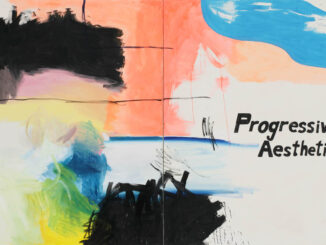
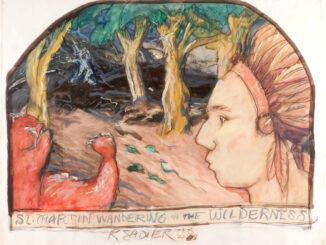
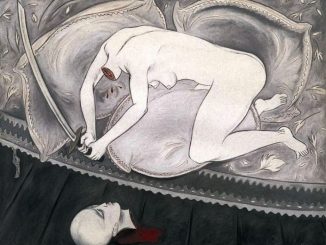
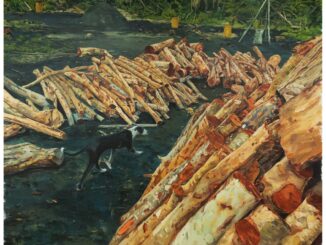

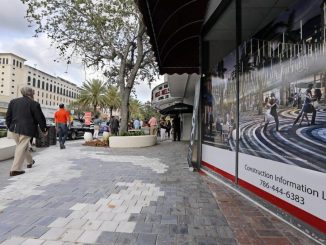
Be the first to comment